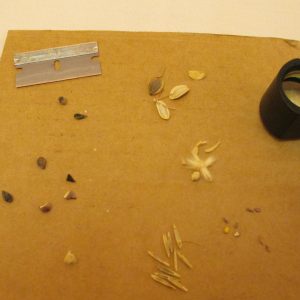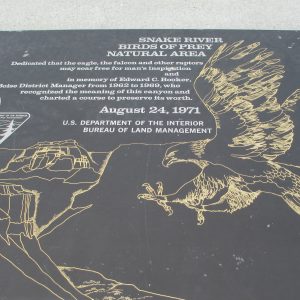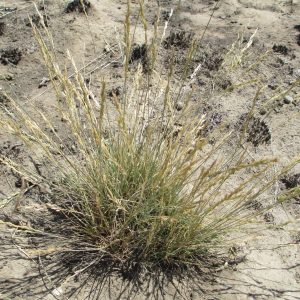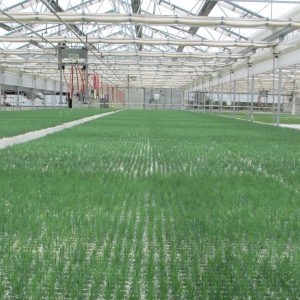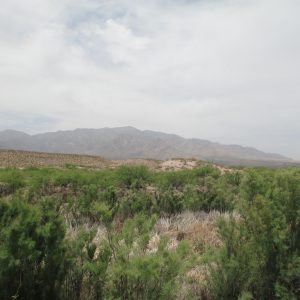The heat is creeping up on us at the Safford BLM office. While the days are merely warm now, in a few short weeks southeastern Arizona will be as hot and dry as ever.
Our crew has been spending time mapping invasive Tamarisk as of late. We have been hiking remote drainages and using a Trimble Juno 3 series to map the locations and details about populations of invasive Tamarisk. These populations will be removed as soon as possible by work crews. The mapping project has allowd our crew to see some beautiful areas. One drainage was located in the Dos Cabezas. Only small pools of water existed, but a plethora of flowers were in bloom around these areas. Several small populations of tamarisk were mapped along ~5 miles of the draingage. Another large mapping project took place in Deer Creek, a drainage that runs into Aravaipa Creek in the Aravaipa Canyon Wilderness. Access to this area was very remote, but once we arrived we area able to map ~15 miles. The first day we hiked the upper 6.5 miles up stream from our camp. This portion was fairly rugged with a lot of exposed bedrock. We met 4 rattlesnakes on our journey: 2 western diamondback, and 2 arizona black. The 4th snake we came upon was hidden in a pile of flood debris, and we didn’t notice it until I had reached to grab a walking stick out of the debris and received a vigorous rattle in response. Quite a fright! Only a few small tarmarisk were mapped in this stretch, and it should be fairly easy to remove these populations once the area is reached. The second day we hiked the lower 8 miles from our camp. This portion quickly turned from an open wash to a magnificent slot canyon. The canyon walls were absolutely beautiful. A couple of small springs along the way provided enough moisture for incredible plant diversity. We located several populations of the rare Arizona woodfern, and saw diverse flowers in bloom, including Golden Columbine, one of my favorites. In the cool, shaded canyon the snakes weren’t even around; another plus! With such beautiful scenery, it was a challenge to focus on finding our foe the tamarisk, but we did map at least 15 individuals. Over two days our crew hiked 29 miles. It was a feat, but well worth it to determine the efforts needed to remove tamarisk from Deer Creek, and enjoy such a beautiful area.
It is also the season for us to complete fish monitoring at Bonita Creek, Aravaipa Creek, and the Gila River. The annual Bonita Creek monitoring was a week-long task that required many hours of UTV travel to reach some of our sites. The upper portions of Bonita creek are remote and much more pristine when compared to the lower portion, where our non-native removal takes place. The Reservation Boundary, Midnight Canyon, Red Knolls, and Lee Trail are the Upper Bonita Creek sites where non-natives have not invaded, and intact populations of native fish are doing well. Gallery, Upper Site 1, and Serna Cabin are the three monitoring sites in Lower Bonita Creek where non-natives are prevalent, but native fish are still present as well. Our monitoring consists of setting promar, red promar, and metal minnow nets in the large pools and electrofishing the riffles and glides. This was my first time to electrofish! We also performed a pebble count with the gravelometer to measure the substrate in each habitat. Each fish that is caught is identified and measured to obtain age data. The Bonita Creek monitoring was started in 2003, and data from all 11 years is kept at the BLM office. Lee trail was my favorite site. Along a rock wall there is a deep pool where the natives could be easily seen. Sonora Suckers could be observed mating. Several males were following females around in the shallow sandy area. The females lay eggs in sandy areas for incubation. Males follow the females waiting for her to deposit eggs for fertilization. A large number of Gila Chub were also visible enjoying the great pool habitat. I had not traveled to any of the sites in Upper Bonita Creek, so getting to explore this area and see so many native fish was a treat. Observing natives flourishing in proper habitat without the presence of non-natives highlights the importance of the work I do here. Without non-native removal efforts and habitat monitoring and improvement, these native fish would be in even more danger then they already are.
The spring fish monitoring in of Aravaipa Creek was just completed as well. Aravaipa is home to 7 native species of fish, 2 of which are federally endangered, the loach minnow and spikedace. It is always a great pleasure to monitor in Aravaipa. The canyon scenery and intact native fish assemblage makes for a wonderful couple of work days. Our monitoring protocol in Aravaipa was established in 1963 by Dr. Minckley. The collection of data from the fish populations in Aravaipa for so many years is extremely valuable information for the species that live there. Each 200 meter site is seined throughout, by either seining downstream, or kick seining. In the upper sites, a healthy number of both endangered species were collected. In lower sites, some non-natives are present, including red shiner and yellow bullhead, and native populations are not doing quite as well. The Gila River monitoring is scheduled for June.
My work with ArcMap has continued and my skills are becoming more defined. Updating the Gila River Guide maps was a good task for me to work on, and I am much more proficient with creating maps in ArcMap. I have also been working on extracting data from SEInet to get precipitation information on the pollinator plants we are growing at the greenhouse. I am realizing what an amazing resource ArcMap is and the diverse projects that can be completed using this technology.









































